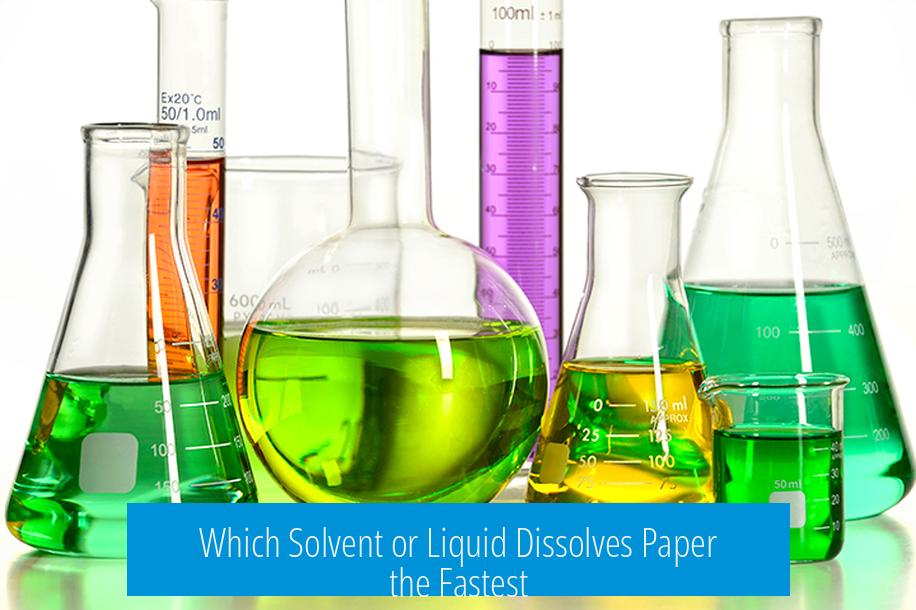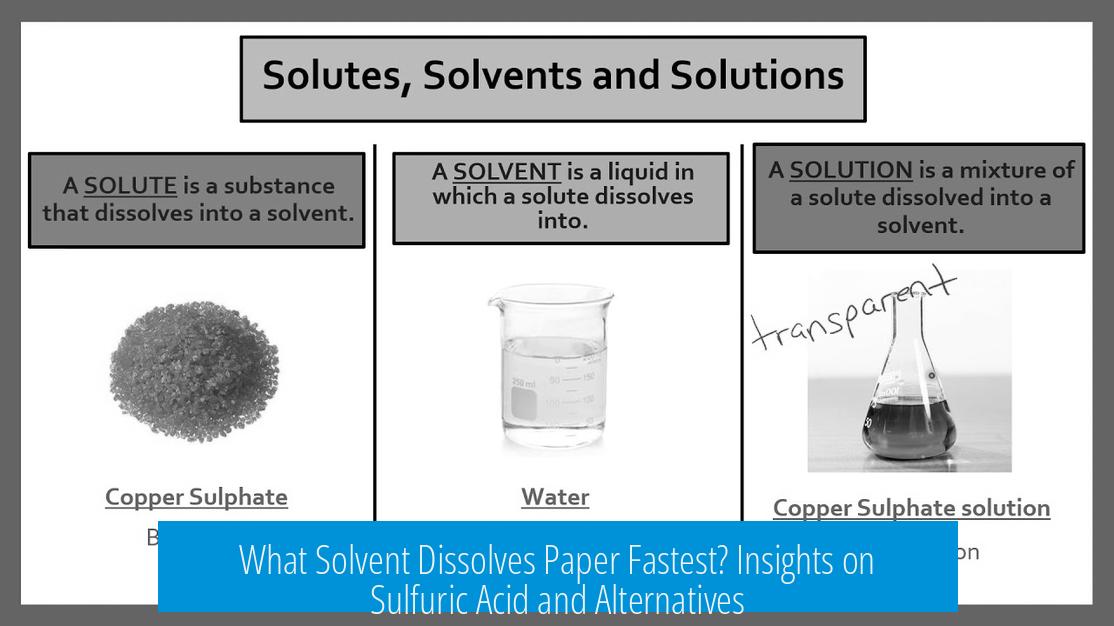Which Solvent or Liquid Dissolves Paper the Fastest?

Concentrated sulfuric acid dissolves paper the fastest among commonly known liquids, rapidly breaking down cellulose and effectively “chewing up” the paper. This powerful acid reacts aggressively with the cellulose fibers that constitute paper.
How Concentrated Sulfuric Acid Acts on Paper
Paper primarily consists of cellulose, a polymer of glucose units. Concentrated sulfuric acid dehydrates and sulfonates cellulose, causing rapid degradation. This reaction disrupts the structural integrity, turning paper into a dark, viscous material almost instantly. The speed and thoroughness of this reaction make sulfuric acid the fastest chemical solvent for paper.
Other Reagents That Can Dissolve Cellulose
- Schweizer’s Reagent: A solution of copper(II) hydroxide in aqueous ammonia, this reagent dissolves cellulose by complexing with its hydroxyl groups. It produces a characteristic deep blue to purple color. It dissolves cellulose effectively but takes longer than sulfuric acid.
- Ionic Liquids: Specialized ionic liquids have shown promise as cellulose solvents. They can dissolve paper without extreme acidity, providing a milder alternative. Their action is slower than sulfuric acid and requires specific ionic liquid formulations.
- Nitrocellulose and Solvents: Chemical conversion of paper to nitrocellulose enables dissolution in acetone and other polar organic solvents. This process is not direct dissolution of paper but a chemical modification followed by solvent action.
Limitations and Considerations
Complete dissolution of paper implies damage to its structure. No solvent dissolves paper without altering or destroying it. Highly reactive solvents like sulfuric acid degrade cellulose rapidly but irreversibly. Milder solvents like Schweizer’s reagent or ionic liquids are slower but still disrupt paper fibers over time.
Other Methods
Burning paper causes the fastest physical breakdown but is not dissolution by a liquid. It is a chemical combustion process resulting in ash and gases, not a liquid-based solvent action.
Summary
- Concentrated sulfuric acid dissolves paper fastest by rapidly breaking down cellulose.
- Schweizer’s reagent dissolves cellulose but slower and less aggressively.
- Ionic liquids offer a gentler, slower cellulose dissolution alternative.
- Nitrocellulose can be dissolved in polar solvents after chemical modification.
- No solvent dissolves paper without damaging its structure.
- Fire destroys paper fastest physically but is not liquid dissolution.
What solvent dissolves paper the fastest?
Concentrated sulfuric acid dissolves paper quickly. It reacts rapidly with cellulose, effectively breaking down paper fast.
Can Schweizer’s reagent dissolve paper?
Yes. Schweizer’s reagent, a copper-ammonia complex, can dissolve cellulose in paper. It is easy to prepare and has a deep blue-purple color.
Are there solvents that dissolve paper without damaging it?
No. Dissolving paper always damages its structure. Full dissolution means breaking down its cellulose fibers.
Can ionic liquids dissolve paper?
Yes, ionic liquids can dissolve cellulose effectively. They offer a less harsh option compared to traditional acids or bases.
How can nitrocellulose dissolve paper?
Converting paper to nitrocellulose allows it to dissolve in acetone and polar organic solvents. This method chemically modifies paper first.





Leave a Comment